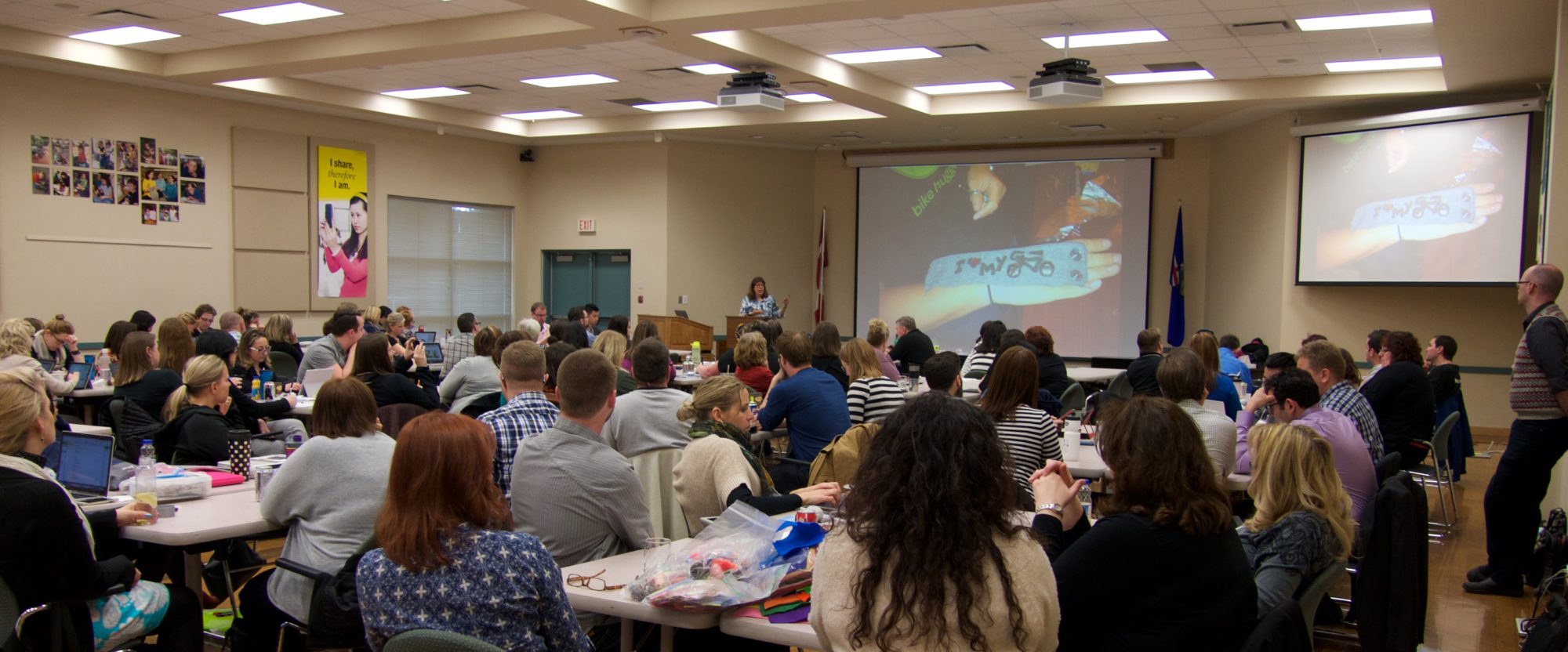Before this all slips my mind, I wanted to post some thoughts about the conversation I led at Educon 2.2 last weekend called Tinkering Towards Technology Fluency. I had a few slides prepared, and a general list of things I thought would be interesting to discuss, and some questions in case there was a lot of deadly silence. Well, that didn’t happen! What happened was that we had a really interesting conversation, which wandered a bit but no one seemed to mind. That’s the cool part about Educon, the conversations are the point. I learned as much from everyone there as I hope they learned from some of the things I shared.
What I’d like to do here is provide a short skim through the topics I brought to the session. I think many of them either support themes I’ve posted about before, or will in the future. I plan to return to them in the future and explore each one in depth.
This is such a rich area for two main reasons:
- Unstructured time is undervalued by School.
- Tinkering supports technology and technology supports tinkering.
Random thoughts in no particular order:
Humans yearn for tinkering and playful activity
The popularity of the Food Network, HGTV, and shows like Monster Garage illustrate how people want to learn from watching others DO things they love. Work is interesting when you can see it happen, and people are interesting when they work. Make magazine is awesome.
Tinkering is social
Yes, there is the stereotype of the lone tinkerer in his basement. But more often, tinkering is a shared, social experience. Social learning with no structure or single, all-knowing teacher can happen! Leveraging the power of social learning seems like something we should be thinking about in this day and age.
Bricolage
French for tinkering, using found objects, playfulness in creation. (Wikipedia)
Tinkering/bricolage vs. the scientific method/analytical design
Seymour Papert, the father of educational technology, defined two styles of problem solving: analytical and bricolage. School only honors one style. What are we losing? (Who are we losing?)
“The bricoleur resembles the painter who stands back between brushstrokes, looks at the canvas, and only after this contemplation, decides what to do next.” Sherry Turkle
Tinkering and gender
The book by Sherry Turkle that I couldn’t remember in the session was “The Second Self”. I also forgot to mention this crucial connection to tinkering and gender issues in technology. Turkle says that tinkering is a “female” approach to technology, calling it “soft mastery” (as opposed to the “hard mastery” of linear, step by step problem solving, flowcharting, and analytical design). However, these “hard” styles are often taught as being superior, with “soft mastery” styles deemed messy or unprofessional. Again, who and what are we losing by ignoring (and denigrating) alternative learning and problem-solving styles?
Tinkering requires similar conditions to project-based learning and games in the classroom. Implementation brings up similar questions
Teachers who are looking at project-based learning or games are struggling with the same issues that arise with tinkering. Time, space, overwhelming curriculum requirements, tests, etc. These all need to be solved in similar ways, and teachers are doing this all around the world. Sharing is important.
More connections with games
James Paul Gee (What Video Games Have to Teach Us About Learning and Literacy) says that we should examine the attributes of gaming such as identity and agency and how to bring those to the classroom. We are being too literal with “games in the classroom.” The attributes of tinkering are similar. We have to be willing to give students agency and allow them to develop their own identities as problem-solvers and learners.
Why is tinkering learning?
Tinkering is a uniquely human activity, combining social and creative forces that encompass play and learning.
The problem with the scientific method
A pet peeve of mine is this structured monstrosity called “the scientific method.” We teach it to children like it came down on stone tablets. It’s not how science really works. Science is about wonder and risk and imagination, not checklists.
Risk and design – what happened in engineering in the 80s
When I went to engineering school, they taught us to use the “waterfall” design methodology. Every stage was planned and went in order. Then in the 80s everything changed.
What happened? Computers. Digital design and modeling decreased the cost of making mistakes. You could try things out with little risk or cost. It’s called the spiral design method, or rapid prototyping, sort of like tinkering with an audience. It’s why Google is always in “beta”. Of course it doesn’t work for everything, you can’t release a “beta” skyscraper or tinker a space shuttle, but for digital products, what’s the harm?
The problem is that school hasn’t caught on to this design methodology. What do we need to do to get school design courses to catch up to the real world?
What can we learn from other unstructured (but successful) school activities?
This also connects back to a post I wrote called Technology Literacy and Sustained Tinkering Time which connected the ideas of Sustained Silent Reading to using technology in less structured ways. Schools have embraced Sustained Silent Reading in the face of scripted curriculum and standardized testing – what can advocates for constructivist education learn from this?
Technology literacy without tinkering time is hard to fathom
Maybe we should be talking about technology fluency anyway. Literacy is such a low bar.
Teaching risk free design is so 20th century.
More later – your feedback on what to tackle first is welcome!
Sylvia

